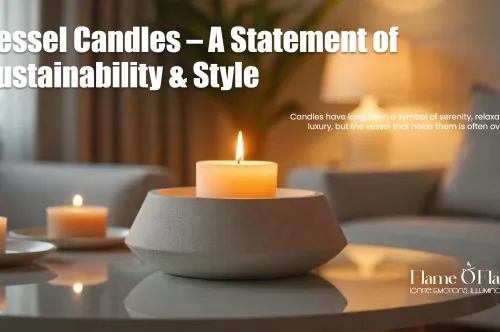Soy Candles vs. Paraffin Candles: Which is Right for You?

Candles have become a staple in many homes, providing warmth, ambiance, and delightful fragrances. But have you ever stopped to consider the type of wax your candle is made from? The choice between soy wax and paraffin wax can significantly impact everything from burn time and scent throw to environmental impact and overall cost. This blog post breaks down the key differences between soy candles and paraffin candles, helping you make an informed decision about which is right for you.
Soy Candles: The Natural Choice
Soy wax is derived from soybeans, making it a natural, renewable resource. This eco-friendly aspect is a major draw for environmentally conscious consumers. Soy candles also tend to burn cleaner than paraffin candles, producing less soot and releasing fewer toxins into the air. This makes them a good choice for those with sensitivities or allergies.
Advantages of Soy Candles:
- Eco-Friendly: Made from a renewable resource.
- Cleaner Burn: Produces less soot and fewer toxins.
- Longer Burn Time: Soy candles often burn slower and last longer than paraffin candles.
- Better Scent Throw (in some cases): While it depends on the specific fragrance and formulation, many soy candles offer a good scent throw, especially when high-quality fragrance oils are used.
- Natural Aroma: Some people prefer the more subtle and natural fragrance profile often associated with soy wax.
Disadvantages of Soy Candles:
- Softer Wax: Soy wax is softer than paraffin, so soy candles may be more prone to melting in warmer temperatures.
- Frosting: Soy wax can sometimes develop a "frosting" or white crystalline appearance. This is a natural characteristic and doesn't affect the candle's performance.
- Price: Soy candles can sometimes be slightly more expensive than paraffin candles, although the price difference has decreased in recent years.
Paraffin Candles: The Classic Option
Paraffin wax is a petroleum-based product and has been the traditional choice for candle making for many years. It is readily available and relatively inexpensive, making it a budget-friendly option. Paraffin wax also holds fragrance well and has a strong scent throw.
Advantages of Paraffin Candles:
- Strong Scent Throw: Paraffin wax is known for its ability to hold and disperse fragrance effectively.
- Lower Cost: Paraffin candles are typically less expensive than soy candles.
- Readily Available: Paraffin wax is widely available, making it easy to find paraffin candles.
Disadvantages of Paraffin Candles:
- Environmental Concerns: Paraffin is a petroleum-based product and is not considered a renewable resource.
- Soot and Toxins: Paraffin candles can produce more soot and release more toxins into the air compared to soy candles.
- Scent Throw Can Be Overpowering: The strong scent throw of paraffin candles can be overpowering for some people.
Choosing the Right Candle for You:
The best candle for you depends on your individual needs and preferences. Consider the following factors:
- Budget: If you're on a tight budget, paraffin candles are generally more affordable.
- Environmental Concerns: If you're looking for an eco-friendly option, soy candles are the better choice.
- Scent Preference: Consider whether you prefer a strong, intense fragrance (paraffin) or a more subtle, natural scent (soy). Test different scents in both soy and paraffin to see what you prefer.
- Sensitivity to Scents: If you are sensitive to strong fragrances, soy candles may be a better option as they often have a more subtle scent throw.
- Burn Time: Soy candles typically have a longer burn time, meaning your candles will last longer.
- Room Size: For larger rooms, paraffin candles might be preferred due to their strong scent throw. For smaller rooms, soy candles may be sufficient.
Beyond Wax: Other Factors to Consider
While the type of wax is an important factor, other elements contribute to a candle's overall quality and performance:
- Fragrance Oils: The quality of the fragrance oils used in the candle is crucial. High-quality fragrance oils will result in a more complex and long-lasting scent.
- Wick Type: The type of wick used also affects how the candle burns. A properly sized wick will ensure a clean and even burn.
- Candle Vessel: The vessel can impact how the candle burns and how the fragrance is dispersed.
Making an Informed Choice:
By understanding the differences between soy candles and paraffin candles, you can make an informed choice that aligns with your values, preferences, and budget. Whether you prioritize eco-friendliness, scent throw, or cost, there's a candle out there for you. Consider trying both soy and paraffin candles to experience the differences firsthand and discover your personal favorite.







